We get into the nitty-gritty of how a DAC works, what specs to look for, and the pros and cons of the different types.
External DACs remain in constant discussion in audiophile forums, and many swear by their ability to improve audio quality.
But for someone inexperienced, it can be a challenging topic to navigate. Not only are there countless options to choose from, but there’s also much to consider in terms of compatibility, what form type to choose, and what specs to go for.
In this article, we break all that information down to something simpler. We’ll give you a simple rundown of all the critical things you need to know about DACs and how they work to see if you need one. Let’s get to it!
What Is a DAC?
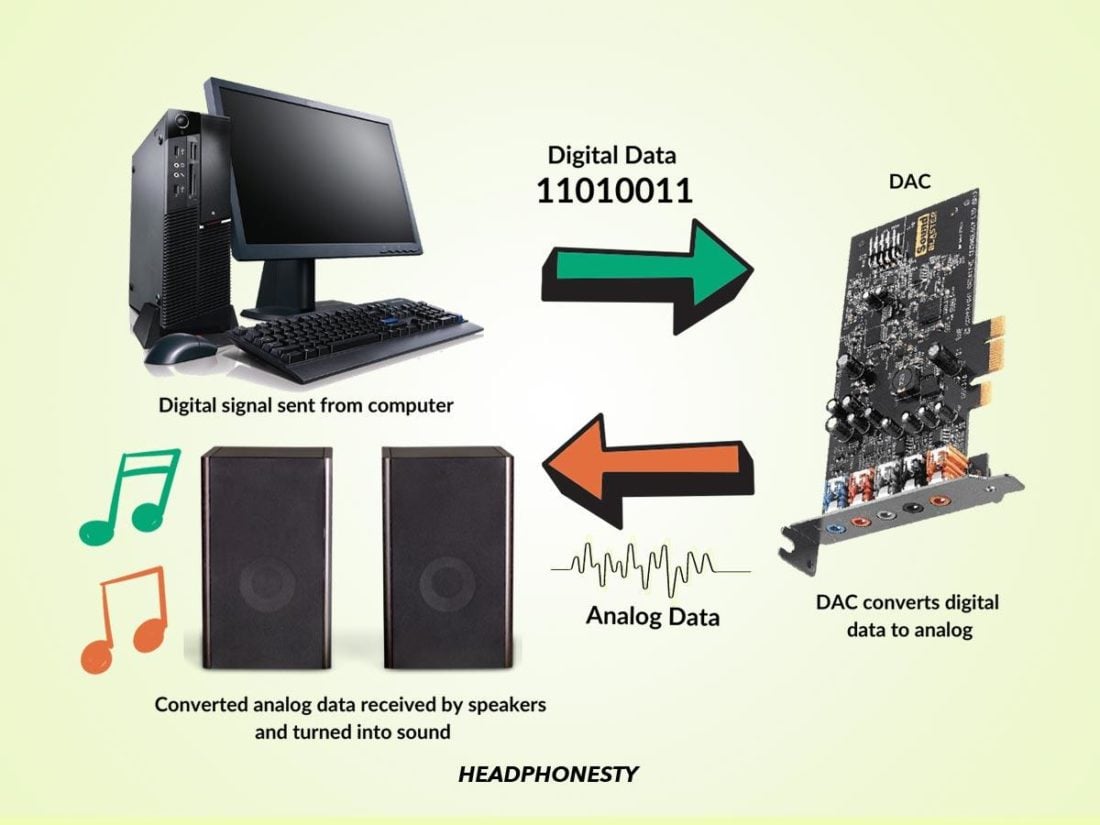
A DAC (digital-to-analog converter) is a tech tool that converts digital audio signals (binary codes) into analog waveforms (what you can hear).
So, when does the actual conversion from digital to analog take place? Well, it occurs in a split second before playback.
Before the music reaches your ears, the DAC processes all the binary codes that make up a digital audio signal and converts them into an analog signal. That signal then gets sent to an amplifier, before getting sent to your headphones or speakers.
DACs are typically integrated into many devices such as smartphones, tablets, and computers. However, they can also be used as an external stand-alone tool that you can hook up to your audio devices.
Why do we convert analog to digital signals only to change them back?
To understand this, it’s important to first grasp the difference between analog and digital signals.
An analog signal is a continuous wave that constantly varies in amplitude or voltage. When plotted on a graph, analog signals look like smooth, continuous sine waves, identical to the wave generated by the original sound. As such, analog recordings deliver the most accurate audio reproduction of a sound.
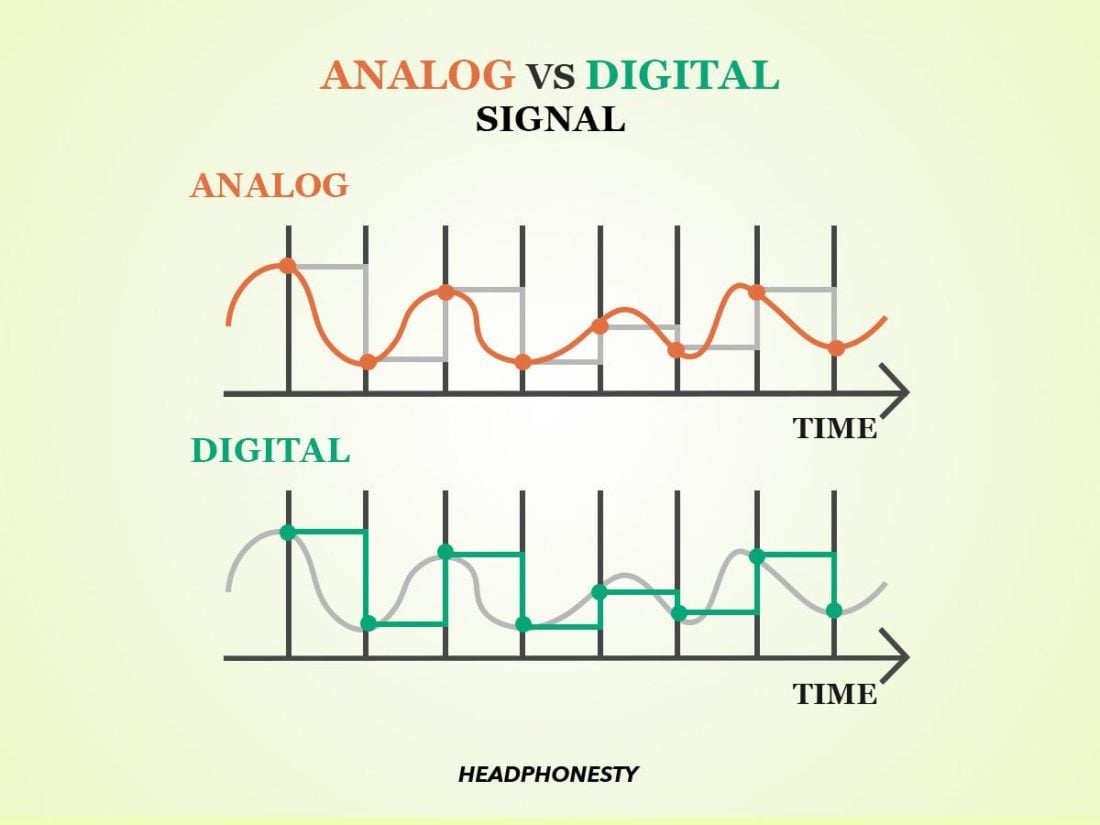
In contrast, digital signals are binary waveforms. They’re an approximate representation of the original analog soundwave and have an amplitude limited to a specific number of values limited by the number of samples per second (aka the sampling frequency).
These signals are represented by discrete square waves, making digital soundwaves look less smooth when plotted. And because they’re approximations, digital signals can tend to gloss over the more subtle nuances in audio, which can make them sound less accurate.
Going back to the original question – if analog signals are already so accurate, and digital signals are only approximated, why convert them in the first place? There are many reasons, and most of them have to do with convenience. The main reasons are:
- Digital signals can be transmitted, compressed, and stored much easier and faster.
- They’re less susceptible to noise, distortion, and deterioration.
- They are the current defacto method of music distribution.
How Does a DAC Work?
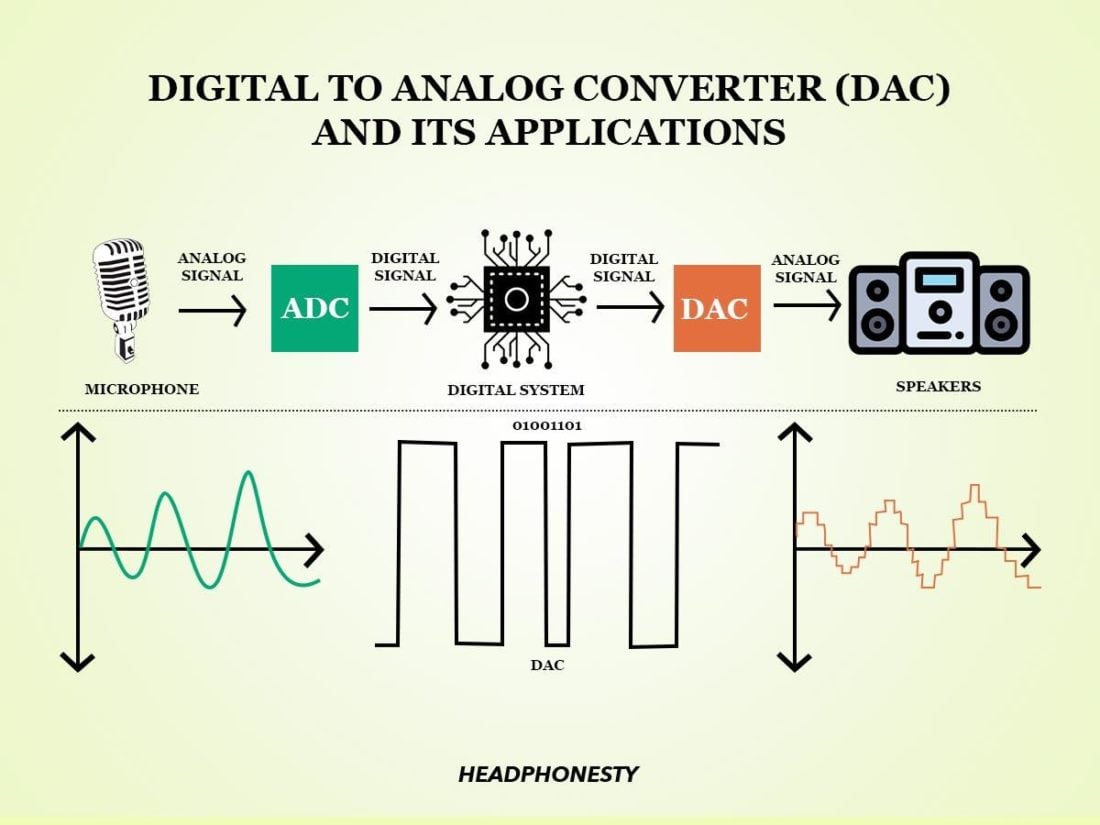
As mentioned earlier, DACs convert digital signals to analog signals. They do this by processing the digital signal’s binary information using the weighted resistor method or the R-2R ladder network method.
In other words, a DAC takes multiple samples of the digital signal to reconstruct an analog wave.
However, since digital signals are made up of approximated values of the original analog soundwave, you end up with a jagged stair step wave rather than the typical smooth analog sine wave.
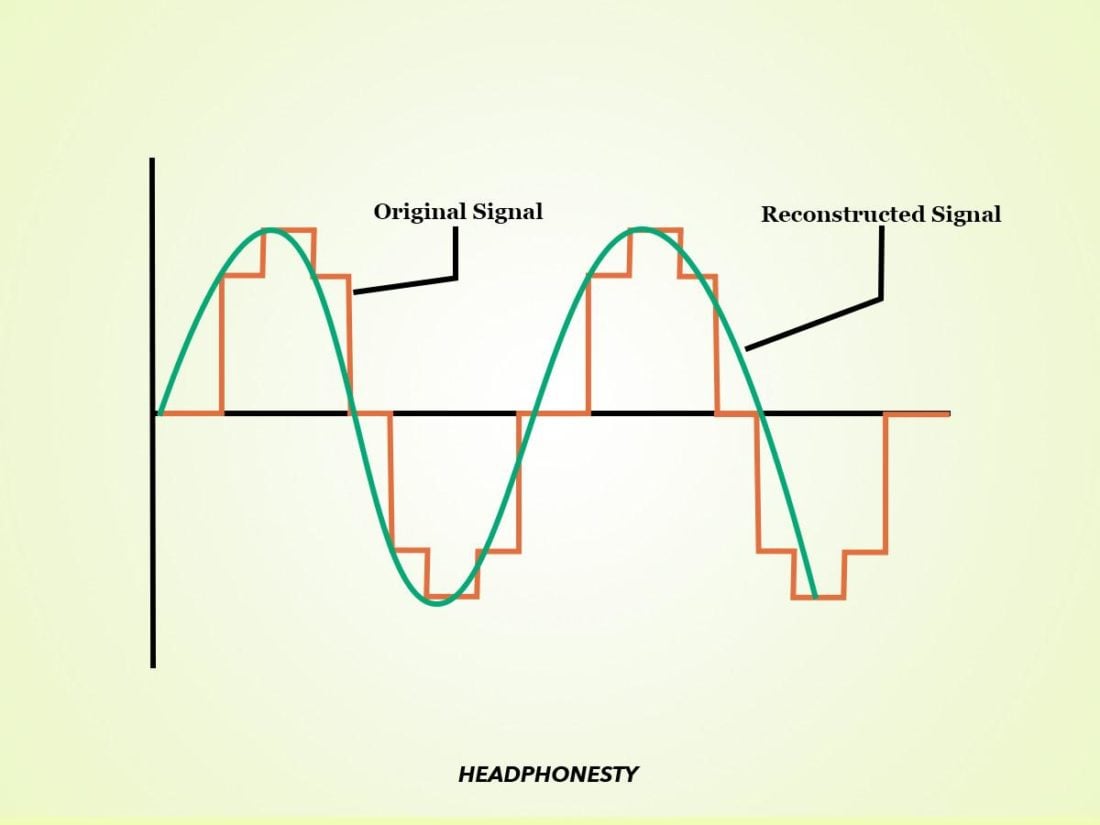
This is where the interpolation filter or smoothing low-pass filter comes in. It’s the final step in the digital-to-analog conversion, further improving the reconstructed analog wave.
During this process, the gaps between each “step” are analyzed by the DAC to determine the approximate values between them. The process smooths out the sharp variations in each “step,” effectively reducing unwanted frequencies and resulting in a smooth, continuous analog wave.
Do You Need an External DAC?

Nowadays, almost all audio systems and devices have built-in DACs. The catch, however, is that integrated DACs don’t always guarantee excellent audio quality. Here’s why:
- They are built to price points, not for sonics: Most built-in DACs, especially on PCs and mobile devices, are built to minimum requirements necessary for their function. This is because manufacturers sacrifice the quality of the components used to minimize weight, power consumption, and cost. After all, for the typical consumer, DACs aren’t exactly a priority on the specs list when buying a PC or smartphone.
- Not everyone is an audiophile: Most people don’t have super discerning listening habits or aren’t using super high-end audio gear. So, the difference between standard and hi-res audio quality can often go unnoticed. As such, most manufacturers don’t prioritize installing high-quality DAC chips in their devices.
- Electronic noise: Integrated DACs are constantly bombarded by electronic noise. For instance, built-in DACs on computers have to compete with the noise generated by all the hardware it’s surrounded by. And this can introduce distortion and other unwanted artifacts into your audio. It’s like trying to record a song in the middle of a busy highway.
External DACs, on the other hand, have less internal electronic noise to compete with, allowing them to process audio signals more cleanly. They’re often built with better quality components that let them decode digital audio data with greater accuracy. And, they’re also much easier to replace or upgrade with a newer model if the need arises.
But don’t necessarily expect a DAC to improve your audio by itself
External DACs can make a tremendous difference in your audio quality, but keep in mind that they aren’t the sole reason for better audio. It’s the sum total combination of the entire system’s components:
- Headphones
- Audio source
- Amplifier
- DAC
In terms of quality, these components should complement each other. It’s not enough to buy a high-quality external DAC and expect everything to sound better. You’ll also need a pair of high-quality headphones and an equally good amplifier that can deliver.
Similarly, if you’re only investing in high-quality headphones and amps and not upgrading your built-in DAC, you may still not be able to realize the full potential of your audio gear.
The same can be said of the audio source or files you’re listening to.
So, do you need an external DAC?
If you’re a casual listener who primarily uses Spotify or Youtube Music, it is very possible for you be okay with your device’s built-in DAC. But if you’re using high-end audio gear or planning to upgrade your setup, it may be best to get an external DAC.
What Makes a Great DAC?
If you’ve decided to upgrade your DAC, there are several specs to consider to ensure you’re getting the most flexibility and functionality for your system. Here’s what to look out for:
Resolution
To know the audio resolution of a DAC, you need to look at its sample rate and bit depth.
The sample rate is the number of samples taken per second from an audio file or signal. The standard sample rate for CDs is 44.1 kHz, which means 44,100 samples of audio data are taken per second.
Bit depth refers to the number of bits of information stored in each sample taken. These values range from 16-bit (65,536 levels of information) to 32-bit (over 4.2 billion levels of information). The higher the bit rate, the more audio data is captured in a single sample, resulting in a more precise audio reproduction.
So, if you want to listen to hi-res audio formats, you’ll need a DAC with a high enough sample rate and bit depth (typically at least 192kHz/24-bit) capable of decoding large audio file sizes.
Dynamic range
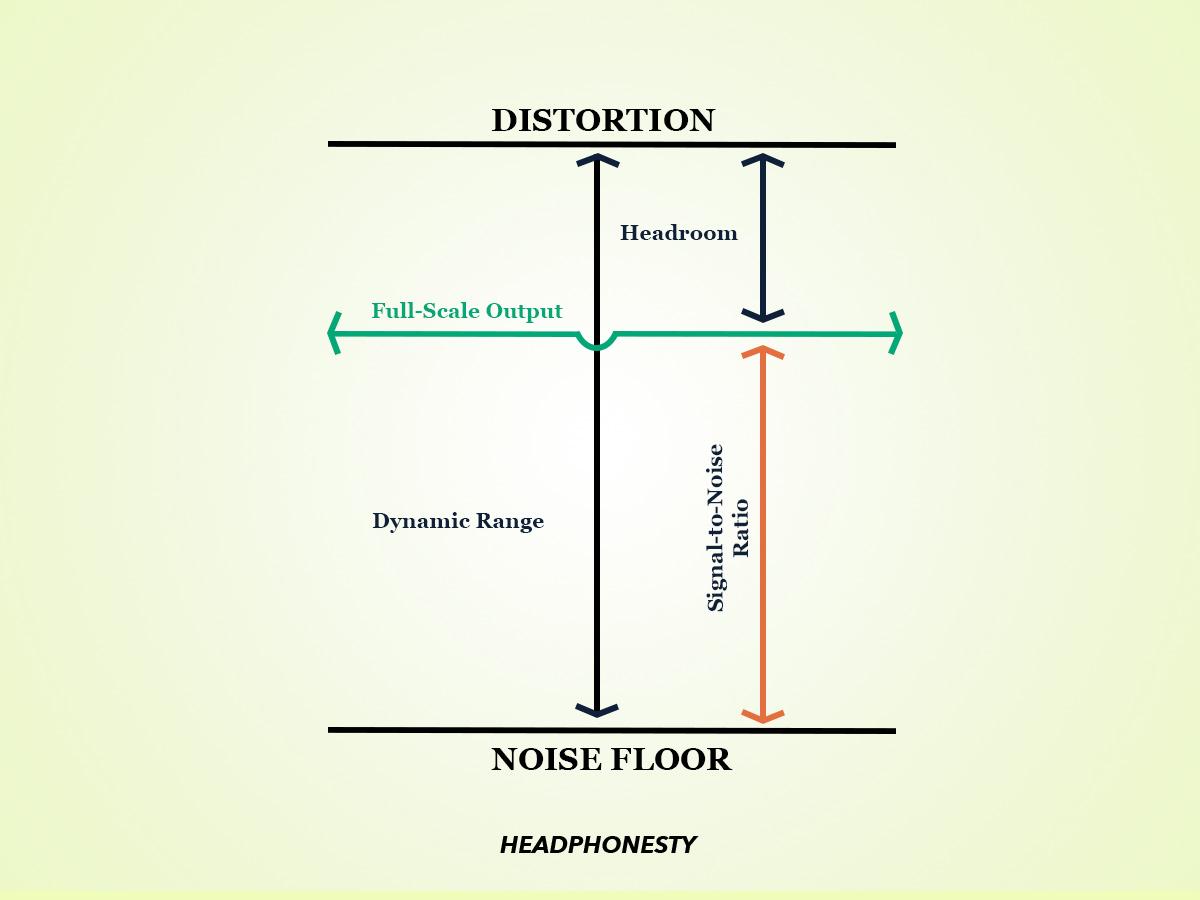
The dynamic range, expressed in decibels, is the difference between the loudest and softest sound output of an audio file before distortion in the upper limit and the noise floor becomes audibly noticeable.
Theoretically, dynamic range is limited by the bit depth. As discussed earlier, bit depth determines how accurate the reproduced audio is. The higher the bit depth, the wider your dynamic range becomes, and the more audio detail is accommodated.
Now, a dynamic range of 144.49 dB or 192.66 dB might sound extremely excessive, especially since many highly-produced mainstream pop and rap songs don’t need much dynamic range. Not to mention, the safe limit of human hearing is only 90 dB.
However, for genres like classical music that contain more variations between loud and quiet, a wider dynamic range can help to fully appreciate those variations without encountering added distortion or noise problems.
File type compatibility
Not all DACs are compatible with all audio formats. So, it’s essential to know what audio file types you tend to listen to the most and choose a compatible DAC accordingly. Different audio formats are classified into three categories: lossy, compressed lossless, and uncompressed.
Lossy
Lossy audio formats aren’t known for fantastic quality because they’re encoded in a way that sacrifices a lot of crucial audio data. You get a smaller file size that’s easier to store, transfer, or stream by trimming off portions of the audio data.
This is why popular music streaming services like Spotify use them. The trade-off, however, is that the sound quality is diminished .
All DACs can handle lossy audio formats, the most common of which include: AAC (Advanced Audio Coding), OGG (Ogg Vorbis), WMA (Windows Media Audio).
MQA, a format used exclusively by Tidal, is also considered a lossy format, however, it can only be decoded by devices, which are licensed to utilize it.
Compressed lossless
Like lossy formats, compressed lossless formats store data in smaller file sizes, but they do so without sacrificing any audio data. This makes them relatively easy to store and quickly transfer while offering a more high-quality listening experience.
Audio formats that fall under this category include: FLAC (Free Lossless Audio Codec), ALAC (Apple Lossless Audio Codec), and DSD (Direct Stream Digital).
FLAC is, by far, the most common lossless audio format. It supports high-resolution sample rates and is used by many popular streaming services like Tidal, Amazon Music, and Deezer. You’ll probably have more difficulty finding a DAC that doesn’t support this file type.
ALAC, primarily used on Apple Music and Apple devices, requires a DAC for lossless listening. But you won’t have trouble finding one that’ll work on your setup, as Apple doesn’t specify any limitations or recommendations as to which DACs to use.
Uncompressed lossless
Uncompressed lossless files are essentially raw audio files. They’re unaltered and sound exactly like the original audio. They’re also quite large and take up gigabytes of space. WAV and AIFF are the most common uncompressed file formats.
Both are functionally identical in that they use Pulse Code Modulation (PCM) to encode audio data. The only difference is that the former is developed by Microsoft, and the latter by Apple. Both audio formats are compatible with many DACs in the market so you won’t have issues finding one for your setup.
DSD is the cherry on top of the audiophile cake. It has a sample rate and bit depth of 1-bit/2.8224 MHz, which means it samples audio 2,822,400 times every single second. That is an immense amount of data. Theoretically speaking, it’s also the closest you can get to the original sound recording.
It’s also important to remember that DSD recordings cost more and aren’t widely available. You won’t find it on streaming services, and there are fewer mainstream artists in that format. Even Sony’s recommended DSD music stores feature catalogs made up of mostly jazz and classical music.
So, if you’re more of a mainstream music fan, you’re not going to have as easy a time finding software in DSD. But if you’re more about classical symphonies, jazz, and instrumentals (and have the equipment to handle it), DSD may be a worthwhile investment.
Different Types of External DACs
External DACs come in different form factors, designed to maximize your setup. Let’s take a look at the three main types, as well as the advantages and disadvantages of each:
DAC for desktop and home studio
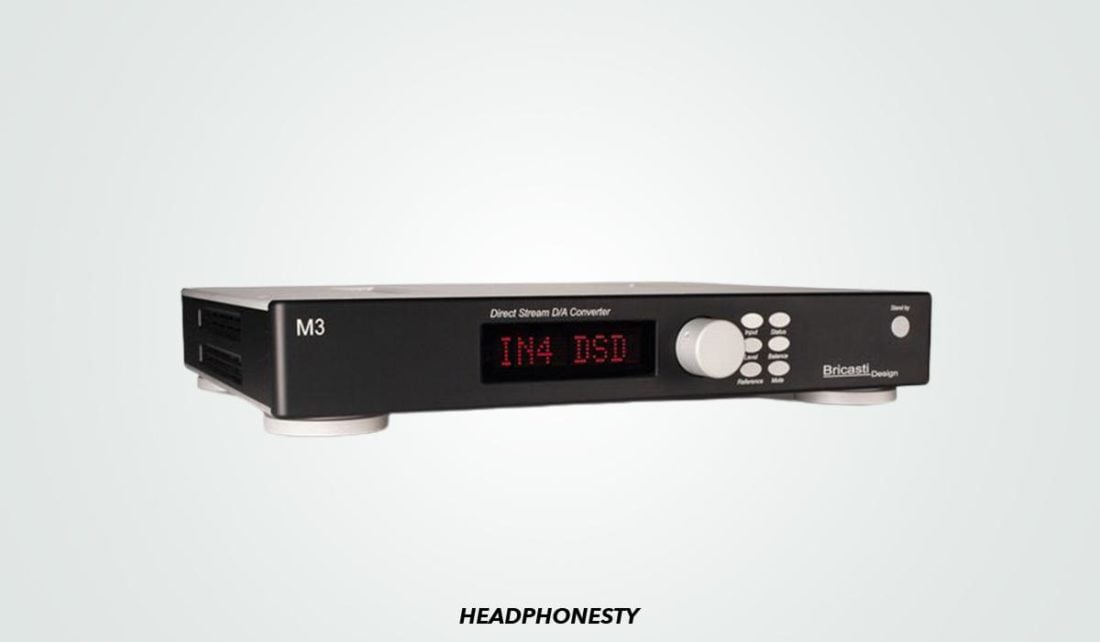
Desktop DACs are designed for home or studio use. They tend to be larger or bulkier but contain higher quality components than their portable counterparts.
Overall, desktop DACs deliver significantly better sound quality than portable ones. These types have more input and output options and can support any audio format. And because they don’t come with an internal battery, you won’t have overheating and prolonged usage issues.
The downside comes at the expense of portability. Larger models can take up space, and an external power supply may require additional extension cables and wires. Many DACs don’t come with a headphone amp, so you may need to buy a separate one if required.
Who is it for: Audiophiles, sound engineers, those using high-end audio gear, those who keep the bulk of their high-resolution music collection on their computer, those seeking the highest sound quality without a need for portability.
Recommended models: Audioengine D1, Cambridge Audio DacMagic 200M, iFi Zen DAC V2.
Device-powered DAC (AKA dongles)
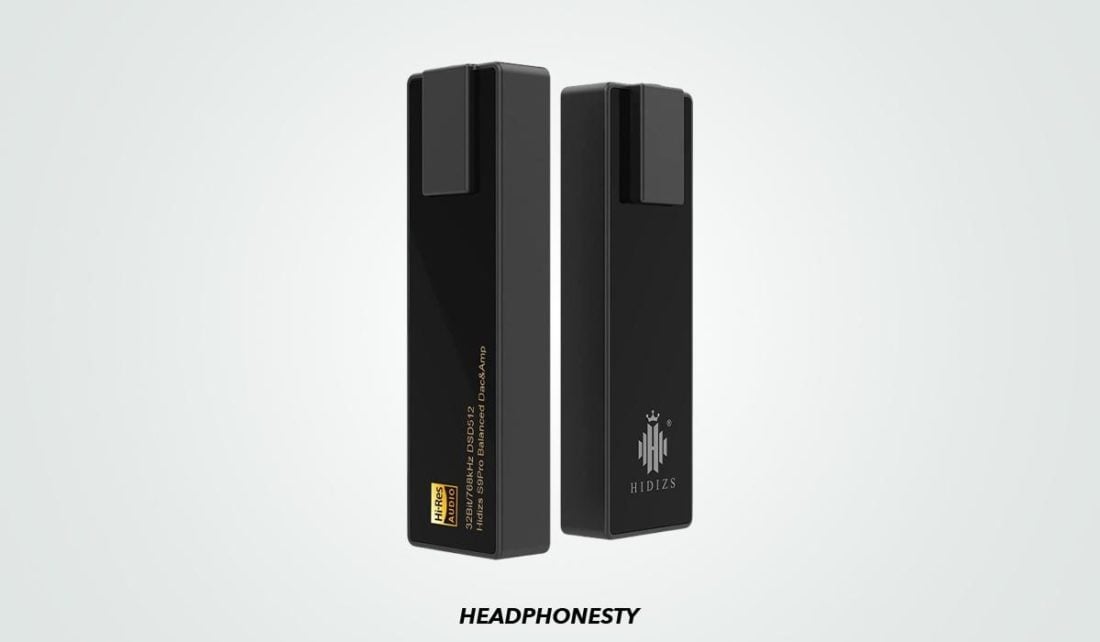
Portable DACs allow you to move away from a desktop setup. They come in various designs, some as small as a flash drive or a credit card.
Most models are designed for easy use with mobile devices, like smartphones and tablets, and are powered by the device itself. They can improve sound quality even on power-efficient IEMs while you’re on the go, and some models even support wireless Bluetooth connections.
The disadvantage of portable DACs over their larger counterparts is that they may have lower power output that isn’t enough to drive high impedance headphones. The sound quality is generally lesser than the better desktop DACs,and some models have limited audio output options.
Who is it for: Music lovers who want a better listening experience while they’re on the go.
Recommended models: Oppo HA-2SE, and DACPORT HD.
Portable DAC/amp Combo
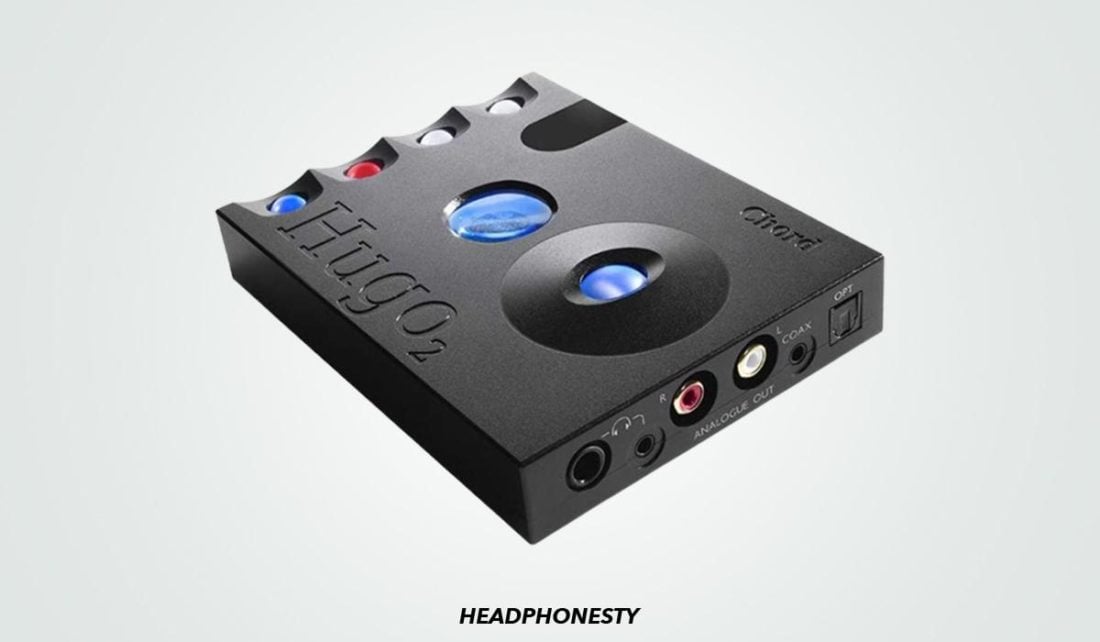
A portable DAC/amp combo is designed for either an on-the-go or desktop setup. It comes with an onboard amplifier, so you don’t need to buy a separate piece of hardware. Often, they will have a rechargeable internal battery to assist in the unit’s power demands.
This type of DAC can power everything from IEMs to demanding high-impedance headphones. Many also have lots of connectivity options and deliver excellent sound quality.
Who is it for: Anyone who wants better audio quality, higher power output than dongles, the flexibility of using it with the widest flexibility in headphone impedances, and does not need the smallest of form factors for portability.
Recommended models: iFi Diablo, Chord Hugo 2, JDS Labs Element III.
Conclusion
To summarize the key points:
- Most built-in DACs are okay for casual listening. But many aren’t capable of handling high-resolution audio files.
- Built-in DACs are often made only to meet minimum functional requirements and are subject to electronic noise from surrounding hardware.
- External DACs, by themselves, don’t automatically give you great audio. You also need equally good headphones, a good amplifier, and a high-quality audio source.
- A high resolution DAC will have the flexibility to play a variety of file formats ranging from the lowest resolution mp3 to the highest resolution DSD.
Whether you need an external DAC depends on what your goals are. If you’re looking into listening to more hi-res file formats and want to get the most out of those new high-quality headphones you just bought, then investing in an external DAC makes sense.
Ultimately, it’s a question only you can answer. Hopefully, with some help from the information we’ve provided in this article, the answer becomes more apparent. Examine your reasons for wanting a new DAC, look at your audio gear, and even your listening habits. All of these play a vital role in this decision.
How’d you find our write-up? If you have thoughts or preferences regarding DACs, we’d love to hear about them in the comments below!
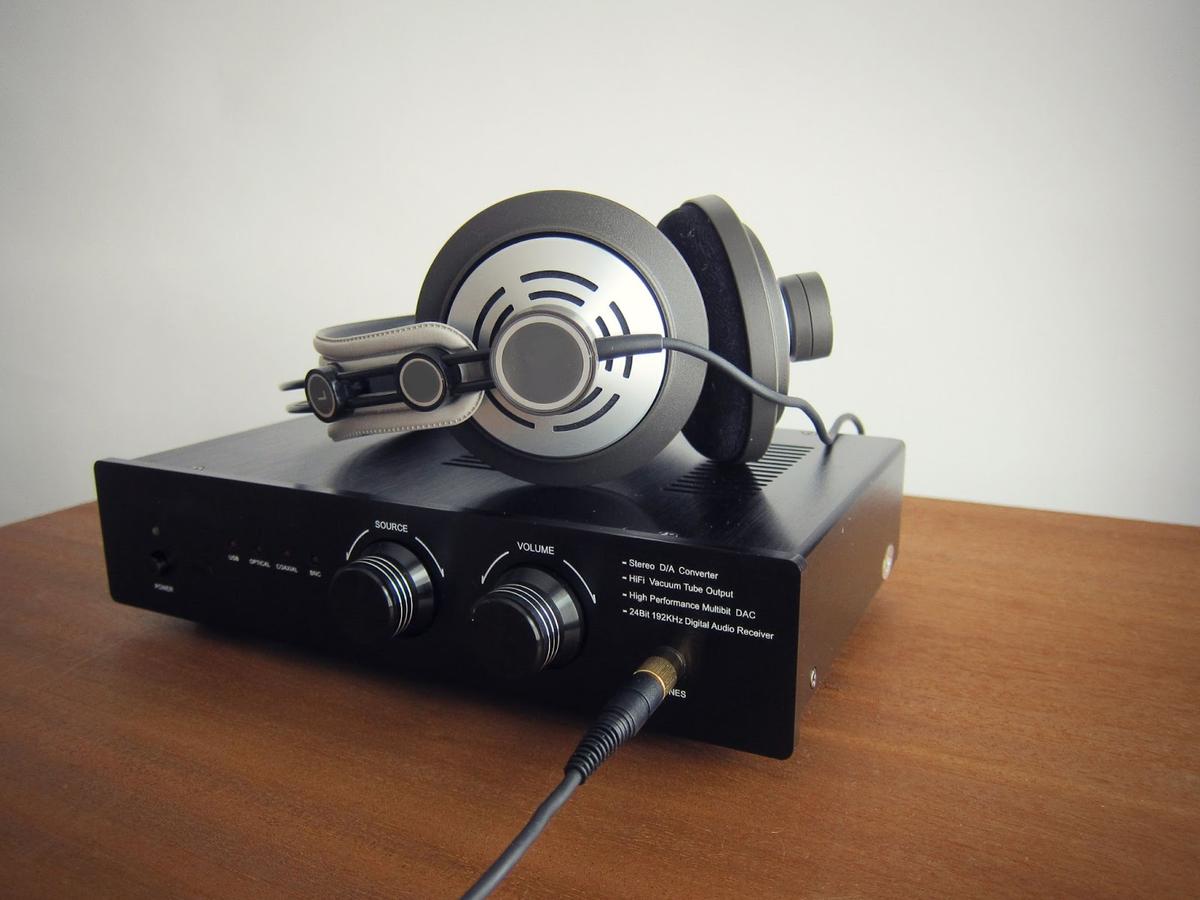
“And because they’re approximations, digital signals tend to gloss over the more subtle nuances in audio, making them sound less accurate.”
What a load of crap. The ‘nuances glossed over’ are to all intents and purposes (if done properly) inperceptable, and far better fidelity is achievable than with any other record/playback medium.
Lol. You hear what you can and don’t fret about what you don’t hear.
Buy the cheapest wine that you like.
This has been SO helpful! For years I’ve been trying to get my head around DACs etc (I’m not the most techy, had lots of help through people trying to explain this to me but it has never gone in) but this has made a lot more sense to me! I’ve been reading other articles too and this again had been great! Thank you for this!
Oh wow, it’s awesome to hear this has helped, Rowan! Thank you as well for your time 🙂
Hi Andy can you suggest a wired earpiece best suited go my Samsung android 22 ultra?
I listen to spotify n want a better experience.i can spend 150USD.tks
Same…your article was extremely helpful!
Thank you so much!
How to do clear sound with DAC in Home Theater system ( all speakers). Let me know how to connect with AVR, Amplifier, and DAC?
If you’re only after DAC for music, then you connect an external DAC to a left/right input channel on the a/v system.
For movies, I don’t think you’ll benefit much from an external multi-channel dac. It would be immensely expensive to bring any benefit. Better to buy a very good a/v integrated system.
Can someone explain to me this aspect of DACs: many audiophile devices in one’s music chain (streamer, pre-amp, headphones, etc…) will likely have a built-in DAC. So, in that instance, which DAC prevails ?? Can one “shut off” the lesser DACs and only have the best one active ??
Hi Bob
I have the same question as you. What is the proper set up and how does one “shut off” the lesser quality DAC?
Thanks
Bruce
Also interested in an answer to Bob‘s question …
An external DAC would output analogue, so you’d connect the analogue/RCA connections to an analogue input on the amplifier. The analogue input should pass analogue audio at that stage to the speakers, thus bypassing the internal DAC.
If you stream music to the amplifier via a digital connection (USB/TOSLINK) then the amplifier will need to decode that itself and therefore use its onboard DAC.
So effectively:
Digital Music > Amplifier Digital In > Internal DAC Decodes Digital Data > Output to Speakers
vs
Digital Music > External DAC Digital In > External DAC Decodes Digital Data and Outputs to DAC Analogue Output > Amplifier Analogue In > Output to Speakers
As a newcomer to the world of DACS this article was extremely helpful in clarifying many points about technical questions.
Thanks MTK! Glad to have helped 👍
Great article but it gives the impression that you need an higher powered headphone to achieve a good sound what isn’t necessarily true , there are a few , not many , but some easy to drive headphones that will work without an amplifier and most of IEM also
You forgot to mention the importance of latency in a DAC. It is important to check if anyone has measured the latency of the input you are going to use.
Great primer, Thanks
This article was very informative for me. I am a music snob. (for the kind of music I listen to. No radio crap.) This article humbled me and didn’t feel like I was talked down to, which is common. Thanks again
Thanks for your time, David! Happy to have helped a bit.